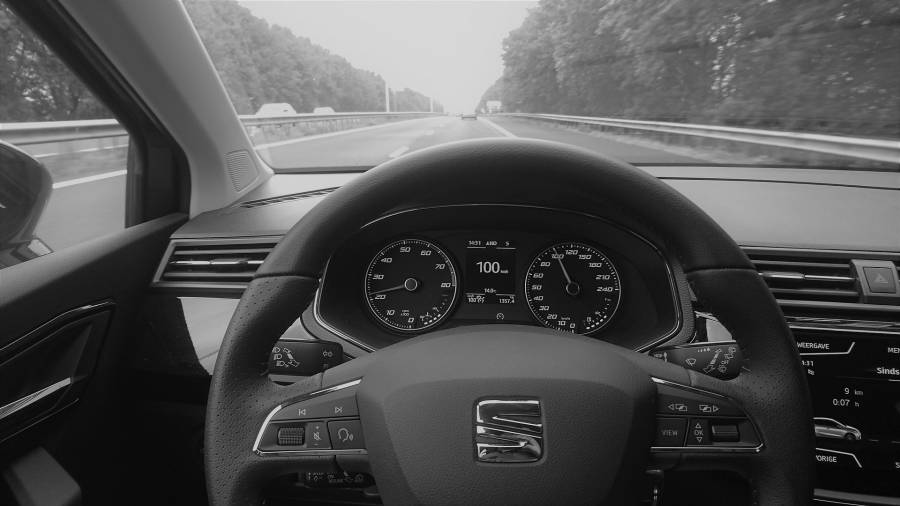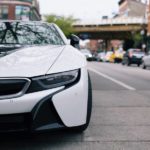Quick Navigation
Ensuring your car’s health is essential, and the engine is one of the critical components.
There’s a common question that most car owners, inexperienced drivers, and those who aren’t mechanically inclined ask. “What RPM should a car drive at?”

If you have been asking yourself the same question, continue reading. This article will look into what the appropriate RPM you should be driving is.
What Is The Importance Of Knowing Engine RPM When Driving
When driving at a high RPM, it is not automatic that the car will hit its peak power. RPM and power increase to their peak when the driver accelerates.
It depends on the car engine and when it hits its peak power and RPM. It is vital to know the engine RPM while driving because of the following reasons:
- Deciding when you can shift gears when driving on a manual transmission car
- Knowing if your car’s engine and transmission are functioning properly
- Increase car mileage by changing gears at the appropriate RPM level
- Driving your car without causing any damage to the engine
With that being said, you need to be aware of the RPM redline. It is marked in red color on your car’s RPM gauge.
The red line is the maximum RPM range you should drive a car. If you go beyond this redline, you start to run the risk of causing severe damage to your car’s engine.
Usually, this is a concern only for cars with a manual transmission.
What Is The Optimal RPM Range For Manual And Automatic Transmission Cars
Recommended RPM Range For Manual Transmission Cars
In a manual transmission car, the driver can control the RPM. A driver does this by shifting the car’s gears and speeding up or slowing down the engine.
When you shift gear at a higher RPM, the car’s acceleration will increase. If the RPM is too high, it can cause damage to the engine or even blow up the car.
So, how about the RPM you should drive when shifting gears? A 2000 to 2500 RPM has been recommended for optimal engine efficiency.
While revving up to 3000 RPM increases your speed, making the engine work extra, decreasing fuel economy.
Modern cars with a manual transmission have a rev governor that prevents the engine from hitting the redline.
However, it will depend on the driver to get back from the interruptions and shift up to a higher gear.
Recommended RPM Range For Automatic Cars
Cars with an automatic transmission have been programmed to shift before engine speed hits the redline zone.
However, the RPM range that an automatic car can drive varies from one car to another. The difference in the RPM range also depends on the type of transmission between the cars.
There is a recommended RPM for most automatic transmission cars when shifting gears. It ranges between 1200 to 1800 RPM.
This RPM range also depends on how you drive a car. The recommended RPM range for automatic cars when driving and shifting gears ranges between 2000 RPM to 2800 RPM.
What Is The Average RPM That A Car Can Drive At On The Highway
Many modern cars have a tachometer that shows the engine RPM at which the car is currently driving. The tachometer usually measures in thousands.
When you look at the tachometer, you will notice that the RPM gauge is labeled 1, 2, 3, and so on.

For example, if the gauge needle on the tachometer indicates 3, you multiply it by 1000. As such, you will be driving at 3000 RPM.
A person driving on the highway at a high speed of about 100km/h can travel between 1600 RPM to 2000RPM.
Modern cars that use petrol to power their engine can drive at about 6000 RPM. It is high compared to many diesel cars.
The rev-limiter or the redline is very easy to hit for many petrol-powered cars when revving on the highway.
When it comes to cars with a V6 engine, they can drive at about 15000 RPM on high gear.
Can Driving At A Low RPM Cause Damage To The Engine
Determining what RPM to drive involves considering the car transmission and the lowest RPM to prevent engine damage.
Many people usually ask if driving at a low RPM is recommended. Under normal driving circumstances, driving at low RPM may not cause damage to the car engine.
When driving at a low RPM, your car engine does a lot of work to get the car up to speed. It will cause the temperatures for both the car engine and cylinder to rise.
If you are slowing your car down or cruising, a low RPM can not damage your engine. However, low RPMs put your car engine at a gearing disadvantage if you are accelerating.
Such a case is where your car engine will start to get damaged.
What RPM Should An Idling Car Drive At
The recommended RPM that you should drive at for an idling car will depend on the type of your car engine.
The idle RPM for a car with a 2.0-liter engine should be at an RPM range between 500 to 800 RPM.
If you’re driving a car with a 2.5-liter engine, the recommended idle speed RPM ranges from 550 to 750 RPM.
So, what RPM should you drive your car if you are not sure about your car’s type of engine?
Well, in that case, you will be okay if you maintain your car’s idle speed between 600 to 1000 RPM. It is usually the average idle speed RPM for most modern cars today.
It would be best if you avoided a high idle speed. You should not drive your car at a high idle speed RPM because it makes your car difficult to control.
A high RPM for an idling car also gives room for unintended acceleration. As such, an idling speed of even 1200 RPM is not advised.
Driving your idling car at this high RPM makes it hard to slow down the car when braking.
Conclusion
Many car owners are concerned about what RPM a car should drive at. It would help if you remembered that there is no exact optimal RPM to drive.
The RPM that you can drive a car varies from one car to another. Driving at a low RPM may not cause damage to the car engine.
However, by doing so, you risk causing damage to your car engine by overworking it, which causes overheating.
If you decide to drive at a higher RPM, it will increase your car’s acceleration. Again, you can also damage the engine or blow up your car if it exceeds the redline.
Therefore, you need to keep an eye on the tachometer. It will help you keep track of the RPM and avoid hitting the redline, leading to engine damage.

With comprehensive experience in writing exceptional quality articles and blogs about cars and related stuff, Daniel is one of the finest bloggers and a hardcore car lover we have. He is an ASE certified technician with an across-the-board experience of 10 years in the industry. He could not help tinkering with anything he got his hands on from a young age, which led to his remarkable career in the automotive repair industry.
When he is not under any hood, you can find him on the water or in the woods to pursue his passion for hunting and fishing. He has been writing for multiple sectors and is a regular contributor to several publications.
He currently owns a Nissan 300ZX TT and a Pearl Yellow but plans to upgrade it to 550 HP. His favorites include the Koenigsegg CCX and Lamborghini Diablo 6.0 VT, but for him, the Ferrari 360 Spider is one of the sexiest cars that exists to date.
Being an avid world traveler, he has spent most of his time analyzing the automotive markets, latest technology, and local favorites to enhance his knowledge base. He is currently living in North Caroline, where it’s all about food and coffee and, of course, cars.






